11- Ultimate Bearing Capacity
The stability of a foundation depends primarily on the soil’s ability to support the loads transferred from the superstructure. When the applied stresses exceed the soil’s bearing capacity, failure may occur — potentially compromising both the foundation and the entire structure. The ultimate bearing capacity refers to the maximum pressure the soil can withstand before shear failure occurs.
Using:
1) invalid bearing capacity determination method
2) incorrect determination of the effective foundation area
3) wrong values for the angle of internal friction
can lead some engineers to incorrectly estimate the ultimate bearing capacity, resulting in foundation designs that are significantly smaller than those designed by MKAPEB.
Each point is clearly outlined here:
1) Ultimate Bearing Capacity Determination Methods
In Geo-technical literature, such as Shallow Foundations by Braja M. Das, several empirical and theoretical methods have been proposed to determine the ultimate bearing capacity.

Among them, the Terzaghi and Meyerhof methods are two of the most widely adopted.
1-1- Terzaghi’s Method
In 1943, Karl Terzaghi expanded on earlier studies (e.g., Prantl, 1921) and developed one of the first bearing capacity equations based on plastic failure theory. His approach makes several key assumptions, including:
- The applied load is purely vertical and centrally applied at the foundation centroid
- No bending moments or load eccentricities are present
- The foundation is shallow and rests on homogeneous, isotropic soil
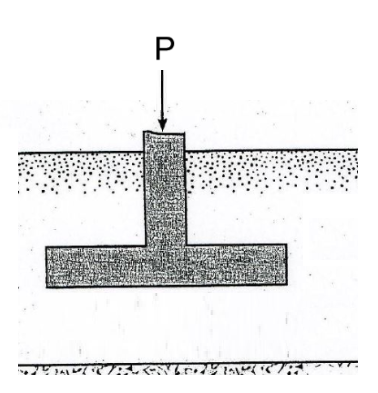
While effective for simple loading conditions, this method does not reflect the behavior of most modern structures—particularly portal frames and pre-engineered buildings with fixed support, where bending moments are presented.
1-2- Meyerhof’s Method
To address the above-mentioned limitations, Meyerhof proposed an empirical method that accounts for more complex loading conditions. This approach introduced correction factors to the ultimate bearing capacity, including:
- Shape factor: Adjusts for rectangular or circular footing shapes
- Depth factor: Considers the increased shearing resistance with depth
- Inclination factor: Accounts for inclined load application and non-central loading
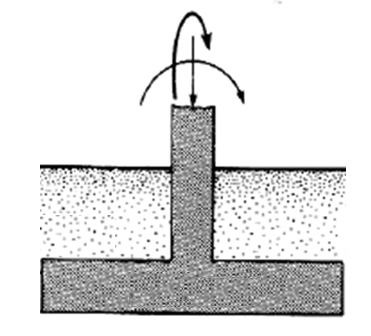

Considering both moments and axial loads, Meyerhof’s approach is the appropriate method for designing most building foundations, particularly for structures such as portal frames and pre-engineered buildings, where combined axial loads and moments typically act at the base. Accordingly, MkaPEB adopts the Meyerhof methodology for calculating the ultimate bearing capacity of foundations.
This aligns with international and national codes such as:
EN 1997-1 (Eurocode 7)
Türkiye Bina Deprem Yönetmeliği (Turkish Seismic Code)
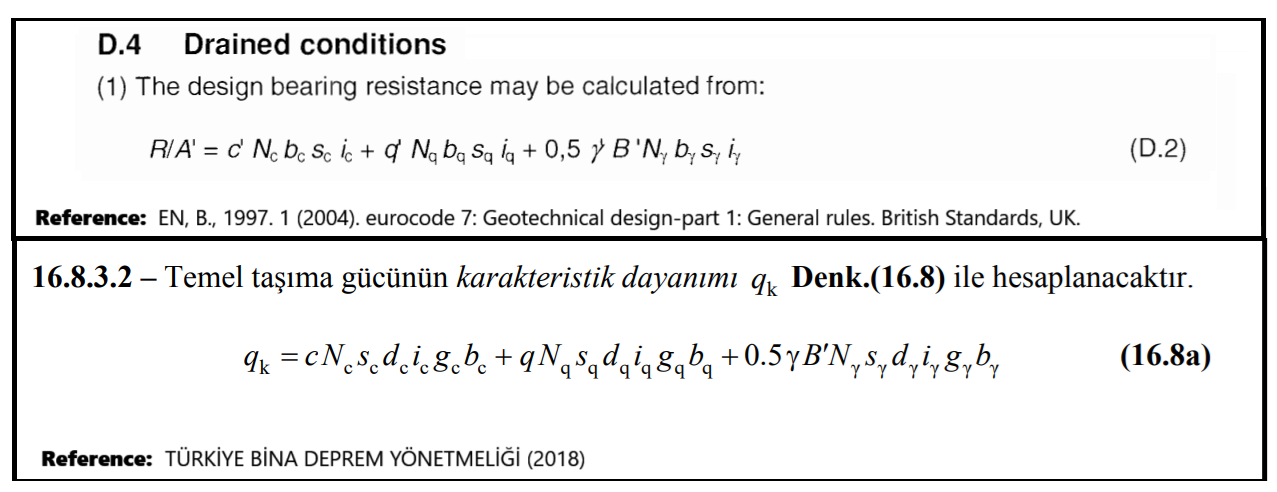
https://www.ngm2016.com/uploads/2/1/7/9/21790806/eurocode_7_-_geotechnical_designen.1997.1.2004.pdf (PDF Page: 160/171)
https://www.resmigazete.gov.tr/eskiler/2018/03/20180318M1-2-1.pdf (PDF Page: 369/416)
Using Terzaghi’s method instead of Meyerhof’s method for determining bearing capacity may lead to significant differences in the calculated ultimate bearing capacity, especially in cases where large moments are present at the base of the building.
2) Effective Foundation Area
In the Meyerhof method, when foundations are subjected to eccentric loading due to the presence of moments, the actual area that effectively resists bearing pressure, referred to as the effective area, is reduced.
This area depends on the magnitude and direction of the load eccentricities, relative to the foundation's length and width.
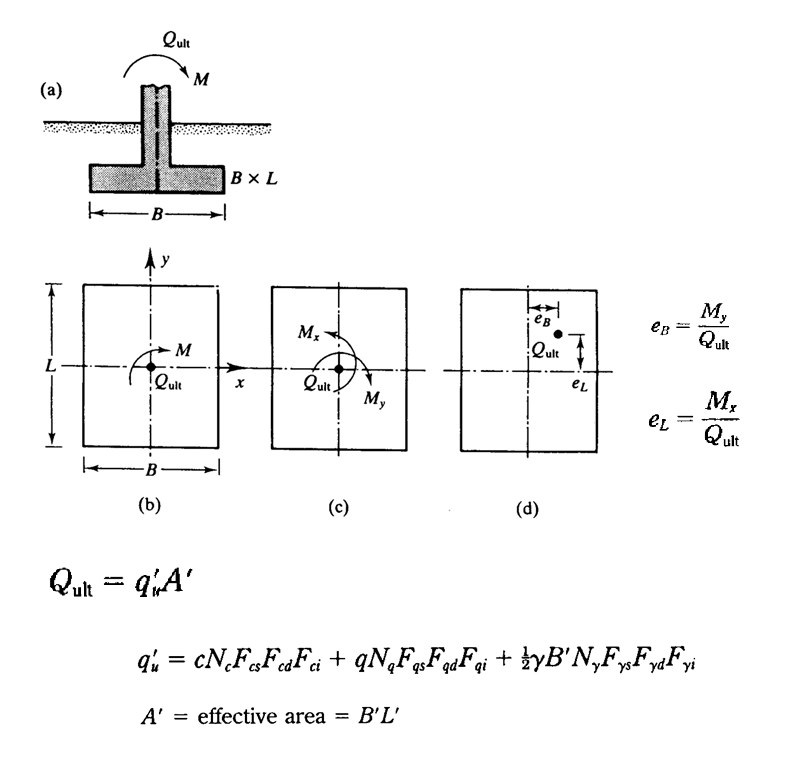
Meyerhof categorized the calculation into four different cases, as shown in the figure, based on the ranges of these eccentricities.
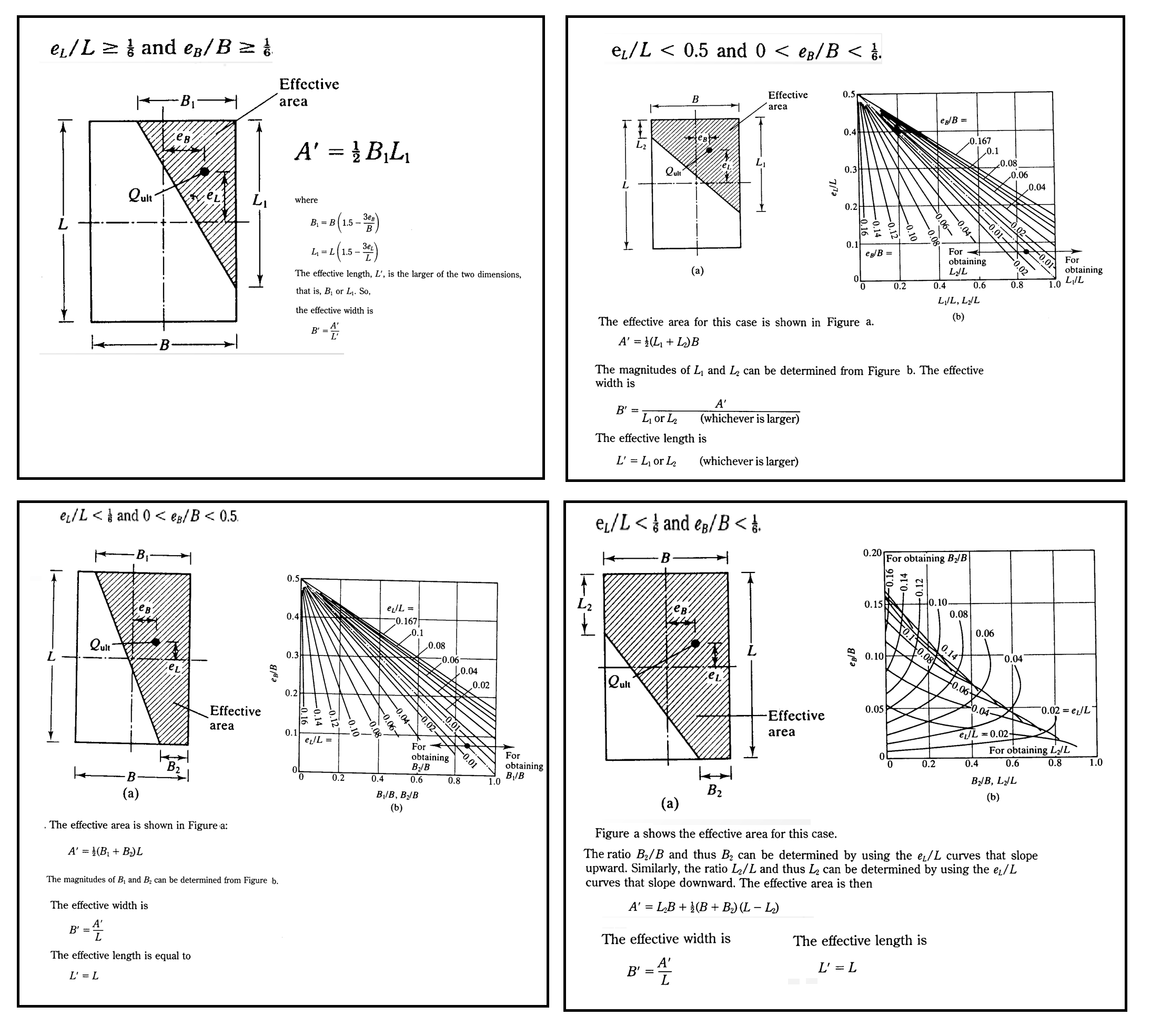
As can be seen, the effective area of a foundation is significantly reduced. MkaPEB incorporates this reduction to accurately account for moments in all load combinations during foundation design. However, ignoring these reductions, as a few foundation designers might do, can lead to significantly smaller but unsafe solutions.
3) Angle of Internal Friction
This issue is clearly outlined in Angle of Internal Friction